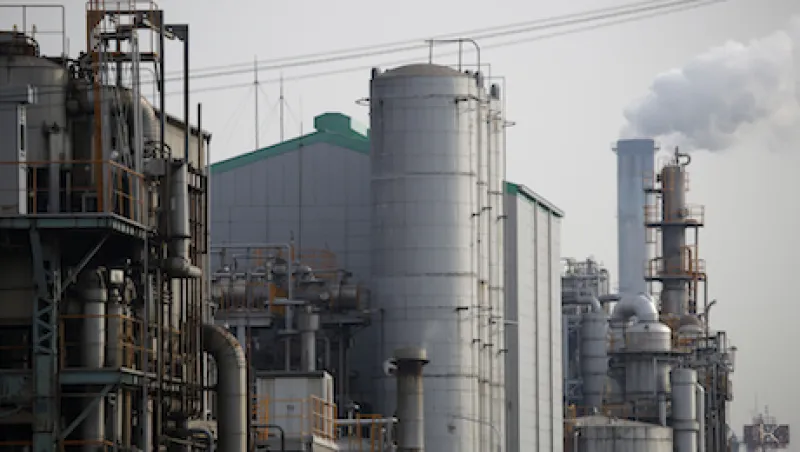Climate change is an important issue for the California Public Employees’ Retirement System. Rising temperatures and increasingly volatile weather events pose significant and growing risks to our $300 billion portfolio. To manage these risks, CalPERS has long included climate as a key topic for corporate engagements, whether with electric power providers, agriculture companies or oil and gas producers. We are also ramping up efforts to integrate sustainability issues, including climate risks and opportunities, in investment decision making across all our asset classes. On all these fronts, consistent and comparable corporate disclosure of material climate issues is critical.
That’s why CalPERS and dozens of other investors petitioned the U.S. Securities and Exchange Commission for climate disclosure guidance in 2007 and applauded the SEC’s decision to issue formal interpretive guidance in 2010. Since then, more companies are mentioning climate issues in financial filings, but the breadth and quality of the disclosures with the SEC are still lacking.
These shortcomings were a key point in a major report issued recently, “Risky Business: The Economic Risks of Climate Change in the United States,” by three Wall Street heavyweights: Michael Bloomberg, Henry Paulson and Robert Rubin. “Businesses and investors have largely been kept in the dark about how climate change will impact specific industries or specific regions, and that puts American businesses and the American economy in an extremely vulnerable position,” Bloomberg told reporters earlier this summer.
Just as companies need to step up their disclosure efforts, more investors should be scrutinizing material climate risk data that are being provided in corporate 10-K filings. But doing so requires an efficient way to easily find and analyze climate disclosures in 10-Ks.
A new web-based climate search tool from the nonprofit sustainability group Ceres and CookESG Research will be helpful in filling this void. Available at www.ceres.org/secsearchtool it covers annual SEC filings by all of the largest publicly traded U.S. companies in the Russell 3000. It automatically excerpts climate information from 10-K filings, such as reporting on regulatory risks, renewable energy opportunities and extreme weather impacts.
This tool is valuable for companies, analysts and investors. For companies, it provides an efficient way to understand how industry peers view material climate risks. For analysts, it can demonstrate gaps between voluntary and mandatory reporting to highlight financially material issues. And investors can be better equipped to engage directly with companies on the quality of their responses to climate change.
A new Ceres analysis derived from the tool shows that 62 percent of S&P 500 companies provided climate disclosure in their 2014 filings. But the tool finds a wide range in the quality of that disclosure, from quantified information on financial impacts to less than useful cryptic boilerplate language. Many of these companies acknowledge climate risks but provide no information on financial exposure and efforts to reduce that exposure.
Investors require better climate disclosure in securities filings to avoid risky investments. Whereas voluntary climate reporting provides helpful data for investors, it often contains incomplete information and is not focused on material issues. Also, some S&P 500 companies and many smaller ones provide no voluntary disclosure at all.
In truth, securities regulators are the best positioned of any regulator to obtain comparable, quantified and detailed information from companies about climate risks. Long-standing SEC rules require disclosure of forward-looking material risks, and climate change is one of the biggest such risks that companies and investors face.
Reflecting such concerns, CalPERS’s newly adopted ten “Investment Beliefs” are meant to provide a basis for strategic management of our investment portfolio, inform organizational priorities and ensure alignment between our board and staff. Belief No. 9 states that “risk to CalPERS is multifaceted and is not fully captured through measures such as volatility or tracking error.” It expands by noting that as a long-term investor, CalPERS must consider risk factors that are slow to develop, such as climate change and natural resource availability.
Fully incorporating all risks, including climate change, into the investment-decision-making process will have a tangible impact in shifting significant capital away from high-carbon emitters toward clean energy alternatives.
To further accelerate this shift, CalPERS is an active participant in two important initiatives: carbon asset risk and green bonds. Climate disclosure is a critical element of both efforts.
The carbon asset risk initiative, which includes 75 investors managing $3.5 trillion in assets, asks some of the world’s largest oil and gas, coal and electric power companies to stress-test the financial risks that global warming poses to their businesses. The issue is especially relevant to oil and gas firms that are investing billions of dollars a year developing high-cost, high-carbon projects that could potentially be stranded as carbon-reducing regulations and renewable energy take hold globally in the coming decades. This effort resulted in new, detailed responses from companies like Exxon Mobil Corp. and Royal Dutch Shell, which illustrate, unfortunately, their unwillingness to seriously wrestle with these issues. An expectation that this risk will be discussed in more detail in SEC filings is part of the solution.
CalPERS is also eager to explore growing opportunities with fixed-income climate bonds and green bonds, a market that has exploded in the past two years. Although many factors are still in play in this emerging market, it goes without saying that better disclosure around these bonds is important for achieving even bigger growth and acceptance.
The bottom line: CalPERS is a big believer in the philosophy that what gets measured gets managed, and what gets disclosed gets done. Stronger climate disclosure is a hugely important step in managing the colossal climate challenge.
Anne Stausboll is CEO of the $300 billion California Public Employees’ Retirement System. CalPERS is a member of the Investor Network on Climate Risk, a network of 110 institutional investors with collective assets totaling $12 trillion.
Get more on pensions.






